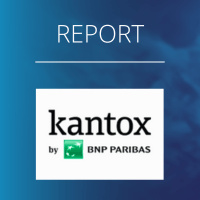If you’ve been dealing with foreign exchange for a while, you may have come across the idea of investors seeking the safety of the US dollar, Japanese yen, or Swiss franc. But what’s it all about?
Source: Oku Markets
A flight to safety
Markets are driven by many factors (see our article on price drivers), and it’s often helpful to think about the overriding market sentiment to explain what’s happening with prices.
In times of economic stress or uncertainty, investors will seek out a safe place to hold assets and protect their wealth. A currency that is expected to hold its value during market turbulence is described as a safe haven.
Secure, Solid, Stable
Of course, not every currency will be in demand during periods of economic uncertainty and market volatility. Only those currencies issued by stable economies without close links to the price or performance of commodities or particular industries could be considered for safety!
The usual suspects are:
- US dollar: the world’s reserve currency, issued by the world’s largest economy (currently), and the medium of exchange in most financial and commodity deals
- Swiss franc: independent from the EU, issued by a historically stable government, and home to a secure and stable financial system
- Japanese yen: historically low-interest rates make the yen a favoured “funding” currency, backed by a stable and strong economy, and with a central bank that’s not averse to intervening to maintain the yen’s value (in both directions)
Simply Safe?
Nothing is ever really guaranteed in markets and that definitely applies to the idea of safe haven currencies. As we know, the value of one currency to another (or, others) is influenced by myriad factors.
Let’s look at early 2022 as a recent example: Russia invaded Ukraine causing a global flight to safety: the dollar strengthened against nearly all currencies, including the Japanese yen and Swiss franc. The yen and franc also gained against other currencies, but not nearly as much as the dollar did and, the yen ended up plummeting over the following months.
Why? There was another story in the background – global monetary tightening – central banks were raising rates, none quicker nor louder than the US Fed. Meanwhile, the Swiss National Bank held tight for a few months and, the Bank of Japan maintained its loose policy. The result was a plunge in the value of the yen.
The point is, whilst various currencies may be linked to risk-on or risk-off market sentiment, we must look at the prevailing situation and market dynamics before jumping to a conclusion. If investors are panicked about global growth due to weak economic data from China, it doesn’t mean the franc will rally…
Would you like to learn more?
Want to learn more? treasuryXL expert Harry Mills can guide you in navigating these currency market dynamics and making informed decisions.
Thanks for reading!
Harry Mills, Founder at Oku Markets














